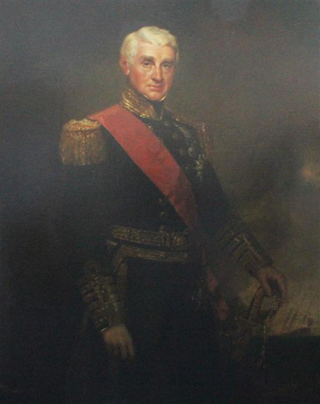Regency Personalities Series-Thomas John Cochrane
Regency Personalities Series
In my attempts to provide us with the details of the Regency, today I continue with one of the many period notables.
Thomas John Cochrane
5 February 1789 – 19 October 1872

Thomas John Cochrane
Thomas John Cochrane was born to Alexander Forrester Inglis Cochrane, who had an illustrious naval career, and his wife. He was always destined to go to sea, and was entered into the navy at the age of seven.
Cochrane began his naval career in 1796 when enlisted at the age of seven and was promoted to lieutenant at the age of 16. His rise quickly in the ranks was considered by many to be blatant patronage because of his father’s influence. Cochrane first commanded HMS Forte.
When Newfoundland became an official Crown colony in 1825, Cochrane at the age of 36 was appointed as its first governor. He took his family with him to Newfoundland: his wife Matilda Lockhart-Ross and their young children Maria and Alexander.
At the time, military officers were appointed to direct colonies that did not yet have representative government. He directed the construction of Government House, which is located between Fort William and Fort Townshend. It has been designated as a National Historic Site of Canada. Although Cochrane had opposed the introduction of representative government to the colony, a new constitution was granted in 1832 and he was appointed as the first civil governor.
Cochrane had many conflicts while governor, especially with the Roman Catholic bishop, Michael Fleming. Much of the Catholic population were descendants from the years when France had been predominant in eastern Canada and included ethnic French and Irish. The colonial office recalled Cochrane in 1834, who had become unpopular. When he left, he and his daughter were pelted with filth on their way down Cochrane Street to the wharf.
He was Member of Parliament (MP) for Ipswich from 1839 to 1841.
In 1842 Cochrane was appointed as Second in Command of the East Indies and China Station before being appointed Commander-in-chief of that Station in his Flagship, HMS Agincourt in 1844. He took part in anti-piracy operations around North West Borneo, including destroying the forts at Brunei in 1845 and 1846.
In 1852 he was appointed as Commander-in-Chief, Portsmouth. He was promoted to Admiral of the Fleet in 1865.
He was knighted and received the Order of the Bath for his service in the East Indies.
Cochrane Street in St. John’s was named for him.
Cochrane Street in Hong Kong was also named for him.
In 1812 he married Matilda Lockhart-Ross. They had one daughter and one son:
Maria Theresa Cochrane, and
Alexander Dundas Ross Cochrane (1816-1890), who became a politician and MP; he was created Baron Lamington in 1880.
Sir Thomas married secondly, in 1853, Rosetta Wheler-Cuffe (1816-1901), daughter of Sir Jonah Denny Wheler-Cuffe, 1st Baronet and his wife. They had one son and one daughter:
Ann Annette “Minna” Cochrane (1855-1943), a courtier;
Thomas Belhaven Henry Cochrane (1856-1925), who became a Deputy Governor of the Isle of Wight
He lived at Hanover Lodge, Regent’s Park which had previously been owned by General Sir Robert Arbuthnot, KCB. Later Cochrane and his wife lived at Quarr Abbey House where guests included Queen Victoria.
Thomas John Cochrane died on the Isle of Wight at Quarr Abbey House, Binstead, 19 October 1872, aged 83. He is buried in the family mausoleum, plot 21777 Kensal Green Cemetery, London.
Lady Cochrane died at Quarr Abbey House, 27 May 1901. She was buried at Kensal Green Cemetery, interred in the mausoleum alongside her husband. Survivors present at her funeral included her brother Major Cuffe; her son, Lieutenant Thomas Belhaven Henry, then deputy governor of the Isle of Wight and his two daughters; and her daughter Minna Cochrane. Also attending were the servants from Quarr Abbey House.





